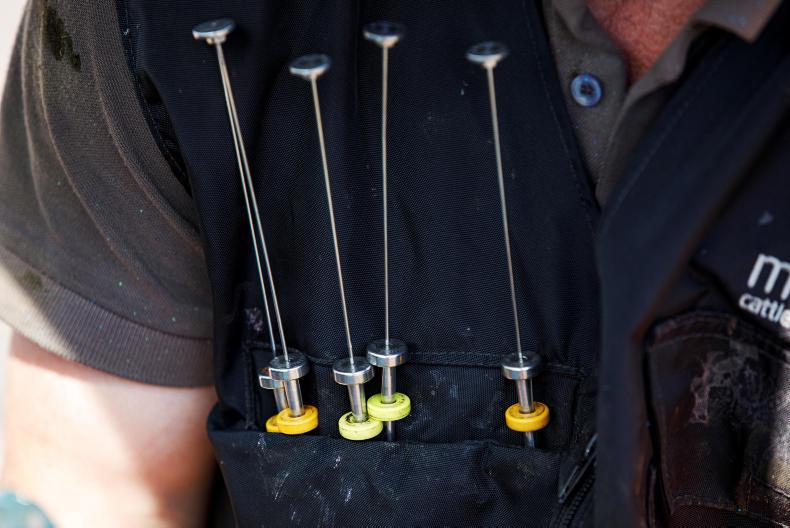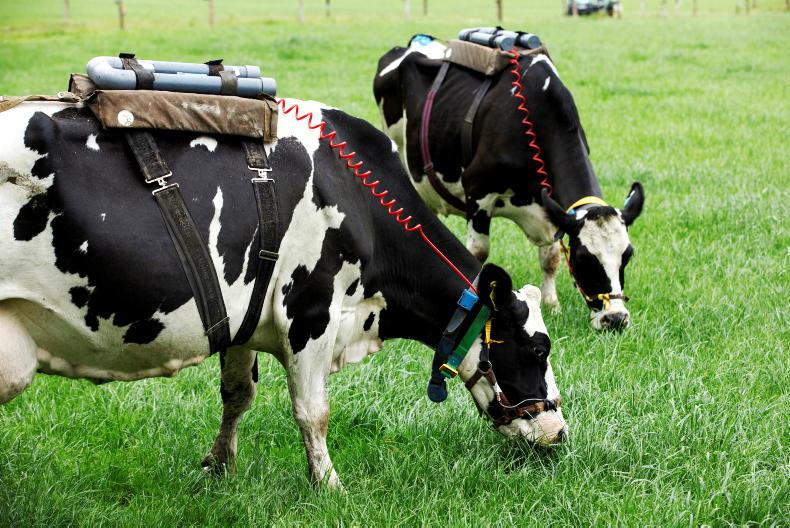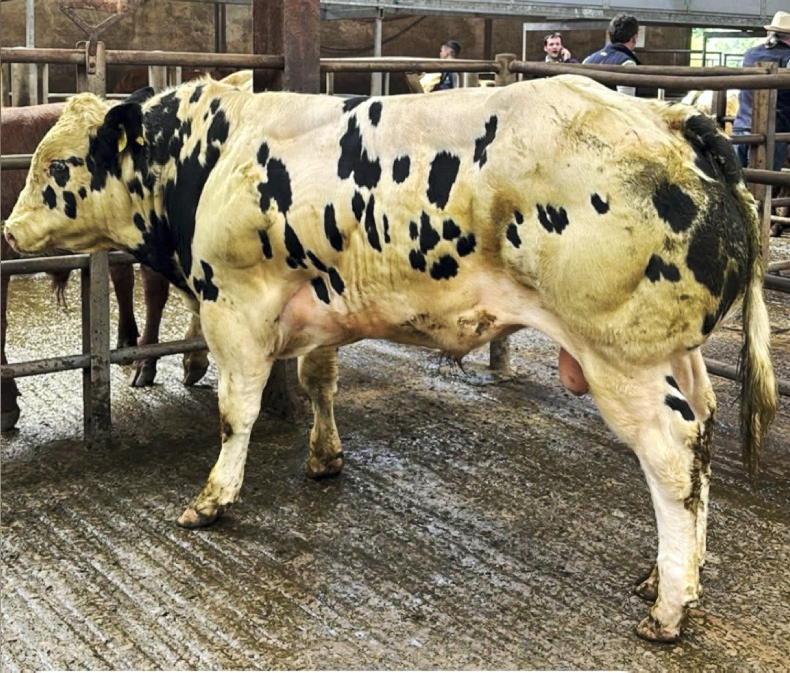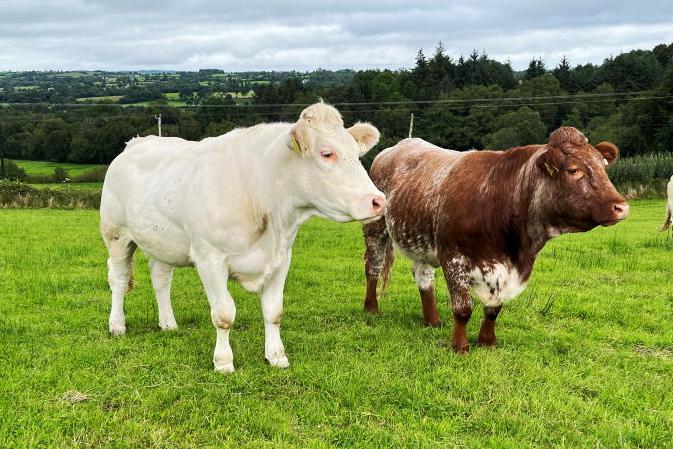The ICBF has released new data showing the trends in EBI for the fertility sub-index in AI bulls over the last 15 years. The analysis in Figure 1 was conducted on the back of questions about genetic gain when genomics is excluded from the evaluation.
As previously reported, the ICBF has decided to reduce the proportion of genomics in the blended proof of an animal, with the result that the EBI of the youngest bulls is going to drop.
To recap, an AI bull’s EBI is a blend of parent average and genomic proof until such time that daughter progeny information becomes available. A daughter proof for a bull is the ultimate test of a bull’s performance as both parental average and genomics are only a predictor of future performance.
Over the last few years we have seen steady gains in EBI in the national dairy herd as more farmers are choosing AI and, within this, more farmers are using high-EBI genomically selected AI bulls.
At this stage, almost 80% of the AI bulls being used in Ireland are genomically selected as these have the highest EBI.
The announcement by the ICBF that it is going to cap the amount of genomics in a proof will put more emphasis back on parent average
One of the issues with this high usage of genomics is that the generational interval is speeding up and fewer animals in a young genomic bull’s ancestry are now daughter-proven. The announcement by the ICBF that it is going to cap the amount of genomics in a proof will put more emphasis back on parent average.
This then raised the question about the reliability of genomics as a predictor of fertility. So by stripping out genomics and looking at the traditional way of calculating EBI (parent average and daughter proof) actual trends in fertility can be observed. Because it takes five or six years to get a daughter proof for fertility, the traditional proof for bulls that went into AI up to 2015 is the most reliable.
The EBI for bulls at current values for the year they were born is outlined in Figure 1.
As can be seen, the fertility sub-index of bulls with no genomics included went from €38 in 2005 to €72 in 2015. As with most genetic parameters, the gain is not linear, with increases in some years followed by drops in other years but the trend is positive.
Rate of gain
Has genomics increased the rate of gain since its introduction in 2009? To answer this, we need to look at the traditional proof since genomics was introduced. This is a relatively short window; looking at figures from 2008, when bulls were first genotyped, to 2015 which is the most recent year that daughter proofs are available. It shows that the fertility sub-index without genomics went from €46 in 2008 to €72 in 2015, a gain of €26 over the seven years or €3.70 per year. This is a higher rate of gain than the €8 gain or €2.70 per year gain that was achieved in the three years prior to genomics being introduced, so again this is positive.
Whether or not these figures will be fully realised when these bulls become daughter proven remains to be seen
The next question is, what’s going to happen in the future? The fertility sub-index with genomics included is showing very substantial increases from 2015 to 2020, going from €79 in 2015 to €131 in 2020.
Whether or not these figures will be fully realised when these bulls become daughter proven remains to be seen, but the ICBF has confidence in the current evaluation process.
The traditional proof from 2015 to 2020 has not been included as this proof only contains parental average EBI. The purpose of genomics is to identify outliers that would not otherwise be identified, so just looking at the parental average from 2015 to present may not give an accurate depiction of true genetic gain. Effectively, it will be next year before we have daughter proofs for 2016 bulls and 2025 before we have daughter proofs for 2020 bulls.
The new training population introduced earlier this year has allowed us to more accurately identify extreme animals
Commenting on the trends, Andrew Cromie of the ICBF expressed confidence that the gains predicted from genomics would continue to be realised in the future. To keep an eye on this, he said that the ICBF would be updating Figure 1 annually as daughter proofs become available.
“The new training population introduced earlier this year has allowed us to more accurately identify extreme animals within the breeding programme, which is very positive. However, it also created some over-prediction in these proofs, which only became apparent this spring. Hence the need for the correction in proofs for these animals, which will now be made in the October evaluations well ahead of the 2021 breeding season,” Andrew said.
Read more
Genomic correction: the background and next steps
EBIs to drop as ICBF confirms over-prediction
The ICBF has released new data showing the trends in EBI for the fertility sub-index in AI bulls over the last 15 years. The analysis in Figure 1 was conducted on the back of questions about genetic gain when genomics is excluded from the evaluation.
As previously reported, the ICBF has decided to reduce the proportion of genomics in the blended proof of an animal, with the result that the EBI of the youngest bulls is going to drop.
To recap, an AI bull’s EBI is a blend of parent average and genomic proof until such time that daughter progeny information becomes available. A daughter proof for a bull is the ultimate test of a bull’s performance as both parental average and genomics are only a predictor of future performance.
Over the last few years we have seen steady gains in EBI in the national dairy herd as more farmers are choosing AI and, within this, more farmers are using high-EBI genomically selected AI bulls.
At this stage, almost 80% of the AI bulls being used in Ireland are genomically selected as these have the highest EBI.
The announcement by the ICBF that it is going to cap the amount of genomics in a proof will put more emphasis back on parent average
One of the issues with this high usage of genomics is that the generational interval is speeding up and fewer animals in a young genomic bull’s ancestry are now daughter-proven. The announcement by the ICBF that it is going to cap the amount of genomics in a proof will put more emphasis back on parent average.
This then raised the question about the reliability of genomics as a predictor of fertility. So by stripping out genomics and looking at the traditional way of calculating EBI (parent average and daughter proof) actual trends in fertility can be observed. Because it takes five or six years to get a daughter proof for fertility, the traditional proof for bulls that went into AI up to 2015 is the most reliable.
The EBI for bulls at current values for the year they were born is outlined in Figure 1.
As can be seen, the fertility sub-index of bulls with no genomics included went from €38 in 2005 to €72 in 2015. As with most genetic parameters, the gain is not linear, with increases in some years followed by drops in other years but the trend is positive.
Rate of gain
Has genomics increased the rate of gain since its introduction in 2009? To answer this, we need to look at the traditional proof since genomics was introduced. This is a relatively short window; looking at figures from 2008, when bulls were first genotyped, to 2015 which is the most recent year that daughter proofs are available. It shows that the fertility sub-index without genomics went from €46 in 2008 to €72 in 2015, a gain of €26 over the seven years or €3.70 per year. This is a higher rate of gain than the €8 gain or €2.70 per year gain that was achieved in the three years prior to genomics being introduced, so again this is positive.
Whether or not these figures will be fully realised when these bulls become daughter proven remains to be seen
The next question is, what’s going to happen in the future? The fertility sub-index with genomics included is showing very substantial increases from 2015 to 2020, going from €79 in 2015 to €131 in 2020.
Whether or not these figures will be fully realised when these bulls become daughter proven remains to be seen, but the ICBF has confidence in the current evaluation process.
The traditional proof from 2015 to 2020 has not been included as this proof only contains parental average EBI. The purpose of genomics is to identify outliers that would not otherwise be identified, so just looking at the parental average from 2015 to present may not give an accurate depiction of true genetic gain. Effectively, it will be next year before we have daughter proofs for 2016 bulls and 2025 before we have daughter proofs for 2020 bulls.
The new training population introduced earlier this year has allowed us to more accurately identify extreme animals
Commenting on the trends, Andrew Cromie of the ICBF expressed confidence that the gains predicted from genomics would continue to be realised in the future. To keep an eye on this, he said that the ICBF would be updating Figure 1 annually as daughter proofs become available.
“The new training population introduced earlier this year has allowed us to more accurately identify extreme animals within the breeding programme, which is very positive. However, it also created some over-prediction in these proofs, which only became apparent this spring. Hence the need for the correction in proofs for these animals, which will now be made in the October evaluations well ahead of the 2021 breeding season,” Andrew said.
Read more
Genomic correction: the background and next steps
EBIs to drop as ICBF confirms over-prediction









SHARING OPTIONS